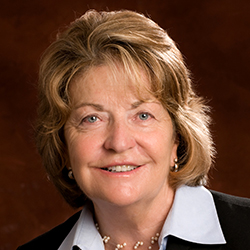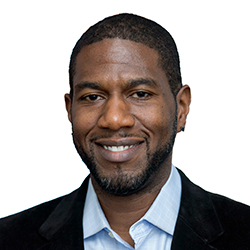In both the city and the state, elected officials say they’re taking steps to combat homelessness by creating more housing that low- and middle-income New Yorkers can actually afford.
Gov. Andrew Cuomo touted a new Affordable New York Housing Program included in the state budget. Similar to the 421-a tax abatement that it replaces, the program offers incentives aimed at generating more affordable housing.
The governor also praised the allocation of $2.5 billion for a wide range of projects, including public housing, the preservation of multifamily housing and new supportive housing, which includes medical and other services on-site. The five-year plan is projected to result in 100,000 affordable housing units and 6,000 supportive housing units.
Similarly, New York City Mayor Bill de Blasio ran on a pledge of creating or preserving 200,000 units of affordable housing in the decade after he took office. This year, his administration cited figures showing that it’s on track to hit that target, with more than 20,000 units added in 2016.
But that’s not the whole story. The lapsed 421-a program was in limbo for months, with Cuomo and de Blasio disagreeing on the benefits for construction workers and real estate developers. Advocates argued the controversial tax abatement was a giveaway to luxury developers that should not have been renewed. Meanwhile, as the homelessness crisis worsened, state funding for supportive housing and other initiatives was put on hold.
RELATED: Will de Blasio break New York City's homelessness cycle?
In the following interviews, we speak with top housing officials to take a deeper look at these efforts and if the impact will be as intended.
Betty Little
Chairwoman, state Senate Housing, Construction and Community Development Committee
C&S: The budget included a new deal on the 421-a tax abatement program. What are your thoughts on the final deal and who do you believe ultimately benefited the most from the agreement?
BL: The budget included a $2.5 billion, five-year agreement to provide capital funding for the creation and preservation of affordable housing. In addition to increased resources, a sound affordable housing plan also needed to take into consideration how taxes and fees increase the cost of development and impact affordability. With that in mind, the budget also revived a tax exemption that had been in place since 1971 to encourage the development of affordable housing in eligible areas of New York City. The Affordable New York Housing Program provides a tax exemption for building multifamily residential housing that sets aside 25-30 percent of the units as affordable housing. The program extends the benefit period to 35 years, which stabilizes housing affordability for 40 years. This will encourage the development of much-needed affordable housing for residents and stabilize communities. I am pleased we were able to reach a global resolution in the budget on these issues.
C&S: With the 421-a deal, what housing issues remain for the rest of the legislative session?
BL: In order to truly address housing affordability, we need to reduce the tax burden on New Yorkers. Earlier this session, the (state) Senate passed legislation to make the property tax cap permanent statewide, except in New York City where no cap is currently in place. I am sponsoring legislation to establish a study commission to review and make recommendations to provide a more balanced real property tax system in New York City. This bill has already passed the Senate, and also awaits Assembly action. Homeownership is an important part of the state’s affordable housing landscape. The Senate sought to increase the number of eligible condo projects under the Affordable New York Housing Program. Unfortunately, that was not included in the final agreement. The Senate’s one-house budget included creation of the New York State First Home savings program. Modeled after the 529 College Savings Program, it would provide a tax deduction for state residents that save toward the purchase of a first home. This measure was not included in the final budget, but I am sponsoring legislation to advance it as part of the regular legislative session.
Steven Cymbrowitz
Chairman, Assembly Housing Committee
C&S: The budget included a new deal on the 421-a tax abatement program. What are your thoughts on the final deal and who do you believe ultimately benefited the most from the agreement?
SC: I'm pleased that the issue of 421-a has finally been resolved and that the program is available to those who believe that it is key to the development of affordable housing in New York City. In uncertain times, the return of the 421-a program provides a degree of certainty that otherwise may not have existed, that affordable housing units will continue to be built throughout New York City. The significant need for affordable housing requires a comprehensive approach to addressing the problem and the release of $2.5 billion in housing funds in this year's budget will help address this need significantly. But it is important that we remain focused on this effort and on ensuring that New Yorkers of all income levels are covered in the development of this housing. The 421-a program is another tool for the development of affordable housing, adding to the toolkit of available options to create this valuable and necessary housing stock. I am pleased that we have moved away from previous versions of the 421-a program, a program that did not always require the construction of affordable units, and that the new program mandates the creation of more affordable housing stock.
C&S: What does the new 421-a deal mean for creating affordable housing and Building and Construction Trades Council of Greater New York?
SC: In the face of the affordable housing crisis, everyone has a role to play in the creation of much-needed affordable units. The inclusion of union labor in tackling this epidemic can only be seen as a positive step towards addressing this housing shortage, and I am certain that it will lead to quality construction and safer work environments as this housing is developed.
RELATED: How well has the East New York rezoning worked?
Jumaane Williams
Chairman, New York City Council Committee on Housing and Buildings
C&S: It’s been a year since the Mandatory Inclusionary Housing, or MIH, was passed. You voted against it. How do you think it’s going?
JW: I don’t think it’s succeeding in achieving the goals of providing the affordable housing for the people who need it the most and addressing homelessness. We have a tendency to talk about homelessness and housing separately. We have to talk about them together. There is a right to say it’s successful. It’s successful in the measures that were put forth (by the city), but those were the wrong measures to begin with. I believe there was a lot left on the table with MIH and now we’re starting to feel the heat of it. And it was unnecessarily left on the table. There was no reason why we couldn’t mandate that a minimum amount of lower affordability was included in every one of the projects so that we can get to the lowest of the AMI’s. And we could have done that while still assisting some of the high-end market. And of course the workforce option, which we just voted out of committee recently, was horrible. So the framework by which we’re measuring success with MIH was wrong from the outset.
Now we’re in a crisis and we’re in a crisis in the era of Trump, and some of it would have been preventable, or at minimum, we could honestly be able to say that we’re using every tool we have. And I don’t think we can say that. Or we have provided ourselves with the wrong tools.
C&S: What’s your sense of how your colleagues are thinking about this? Do others share your concerns?
JW: Yes. Yes I do. It’s hard. We oftentimes say one thing about homelessness and housing in the press conferences and in the media, but then we vote on these zoning projects that are in opposition to what we’re saying. And I don’t think the public really recognizes that. So we just, as a body – me included, because I’m not excluding myself, I’m part of the body – we as a body have to do better in aligning what we’re saying and what we’re doing.
That’s not to say we’re not doing anything. MIH, even as it was, is probably the best in the nation. I think that’s a sad testament to what’s going on in the nation. But New York City has to lead the way, and we have even more importance right now. We’re playing catch-up because of Trump, when we could have been a lot more proactive on issues like this.
C&S: How do you think the city’s doing overall with affordable housing?
JW: There are two great things that have happened recently thanks to the City Council and the mayor. We got free legal aid for a much larger subset of the population. We have to preserve people who are in the housing to begin with, so that’s huge. And the mayor did take into consideration what many of us were saying and adjusted some of the AMI in his housing plan and I just want to give credit. Those were two, huge things and that’s the type of thing we have to do.
But I will say … we have to do better at the zonings that come out of the body because they are very much affecting what we say our goals are in terms of real affordable housing and homelessness. And we have to mention those things together. We got to get better at that because we keep mentioning them separately. And I want to make clear, that this is not to say that people in the higher AMI don’t need assistance, because they do and we have to continue to assist them. But if they need assistance, what happens to the people on the lower (end of the) spectrum?
C&S: Has the administration slowed down the pace of rezonings?
JW: Zonings take a long time. They don’t happen very quickly. We’re voting out, it seems like every month, some kind of zoning project. I think the reason the public doesn’t see them is when it hits the media, it’s the big, huge ones that everybody talks about. But I think what’s hurting us even more are the smaller ones that come through every month that nobody knows about. You add those all together and it’s not good. My objective is to really just try to push a conversation. I just want us to really have an honest conversation about what we’re voting on when it comes to zoning projects as a body. And what we’re telling people our goals and objectives are and what we’re doing to address this crisis.
RELATED: Answering East New York's affordable housing prayers
Maria Torres-Springer
Commissioner, New York City Department of Housing Preservation and Development
C&S: Does the city have contingency plans to fund of HPD’s most important work if there are federal budget cuts?
MTS: We start in a place where we recognize that housing is one of our most basic human needs. It’s essential to our security, our health. It’s a bridge to opportunity and we’re at a point – not just here in New York, but nationally – where these are the types of cuts that are unacceptable given that we need more resources rather than less. Nationally, one in four rental households pays over 50 percent of its income on rent. It is true that HPD on the expense side is very reliant on the federal government. About 86 percent of our expense budget is federally funded to really cover some of our most basic services. Services that allow us to do code inspections, to prevent landlord harassment, to do emergency shelters, to hold landlords accountable, to fund supportive housing. So job one is to ensure that we are resisting those cuts. And I think we are in a good position to do that because affordable housing, making sure that people have decent, affordable homes, is a very bipartisan issue. It’s not just urban areas like New York City, but rural areas, areas in red states and in purple states. So we want to make sure that we are very focused on fighting those cuts. Of course, we are doing all of the necessary scenario planning in anticipation of having to cope with any changes, but we can’t let Washington, D.C., walk away from its obligations to residents of this city and so many other places across the country.
C&S: The mayor’s executive budget just came out with an additional $1.9 billion for affordable housing. De Blasio says there’s a particular focus on housing for lower income levels. Is this a strategic shift, admitting there were some faults in the previous program?
MTS: The Housing New York plan really represents the most ambitious municipal plan to create and preserve affordable housing in the country. And also, even before the addition of the $2 billion, represented an unprecedented commitment of resources. This is now a – with the $2 billion – a $10 billion capital plan that is addressing, in a holistic way, the affordability crisis in New York City. The addition of the $2 billion allows us to reach deeper affordability in the plan, but we already, in the first three years, aside from record-breaking success in general, in terms of the units that have been preserved and created, we also exceeded our targets for extremely low-income and very low-income families. The reality is that there is need across different income levels. And while the need for sure exists – which is why we added the additional $2 billion – for very low and extremely low-income families. For instance, a single mother who works full time at a $15-an-hour job with one child, that household is over 30 percent of AMI. That is a real need. Or a home health care worker married to a dishwasher who has one child, that family too is above 30 percent of area median income. There are real needs across different income tiers, and so we have not just developed, but are aggressively implementing a plan that allows us to address the needs of different families in New York City who are struggling with the affordability crisis.
C&S: You’re new to HPD, just started in January. What’s the biggest thing you’ve learned in these first four months?
MTS: I’ve learned a few things. One, because I have been able to, in a very up close way, talk to residents, tenants, homeowners of this city who are really struggling with the affordability crisis, I’ve gained a newfound appreciation for the significance of the work of this agency. And while I’m new, their struggles are pre-existing. I don’t have and I haven’t had the luxury of a learning curve. I have to, together with the incredible team here, act with a real sense or urgency to make sure that we are doing everything that we can to create and preserve affordable housing in the city.
The second thing is that this work entails me working, and everyone working, in two gears. To advance the mayor’s ambitious housing plan while at the same time dealing with all of the threats on the national level that exist.
And there’s a third thing. We’re doing this from a position of strength because we have such incredible commitment by city government, but also a deep bench of expertise with all of the many players in the affordable housing industry – not-for-profit organizations, the development community, advocates – we are a united front in this fight.
And then lastly, which I think is relevant given my previous roles, is that in order to deal with the affordable housing crisis in New York City, the mayor has made sure that we’re not siloed. There are many parts of that equation. We have to deal with rising rents. We also have to deal with raising incomes. My background, together with the background of the leaders at the Department of City Planning in Marisa Lago, James Patchett at the (New York City) Economic Development Corp., all of us individuals who both worked in affordable housing and economic development, that allows us to make sure that we’re using all of the tools in tandem to deal with every part of the equation so at the end of the day we are uplifting families across the city in the most holistic way.






